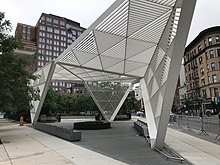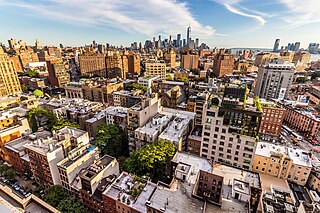
Greenwich Village, or simply the Village, is a neighborhood on the west side of Lower Manhattan in New York City, bounded by 14th Street to the north, Broadway to the east, Houston Street to the south, and the Hudson River to the west. Greenwich Village also contains several subsections, including the West Village west of Seventh Avenue and the Meatpacking District in the northwest corner of Greenwich Village.

The World Trade Center site, often referred to as "Ground Zero" or "the Pile" immediately after the September 11 attacks, is a 14.6-acre (5.9 ha) area in Lower Manhattan in New York City. The site is bounded by Vesey Street to the north, the West Side Highway to the west, Liberty Street to the south, and Church Street to the east. The Port Authority of New York and New Jersey (PANYNJ) owns the site's land. The original World Trade Center complex stood on the site until it was destroyed in the September 11 attacks.
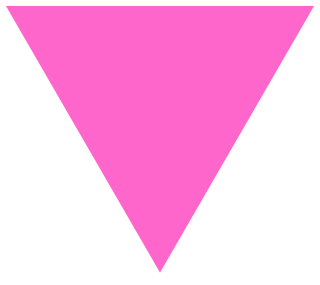
A pink triangle has been a symbol for the LGBT community, initially intended as a badge of shame, but later reclaimed as a positive symbol of self-identity. In Nazi Germany in the 1930s and 1940s, it began as one of the Nazi concentration camp badges, distinguishing those imprisoned because they had been identified by authorities as gay men. In the 1970s, it was revived as a symbol of protest against homophobia, and has since been adopted by the larger LGBT community as a popular symbol of LGBT pride and the LGBT movements and queer liberation movements.

Capitol Hill is a densely populated residential district in Seattle, Washington, United States. One of the city's most popular nightlife and entertainment districts, it is home to a historic gay village and vibrant counterculture community.

Marsha P. Johnson was an American gay liberation activist and self-identified drag queen. Known as an outspoken advocate for gay rights, Johnson was one of the prominent figures in the Stonewall uprising of 1969.
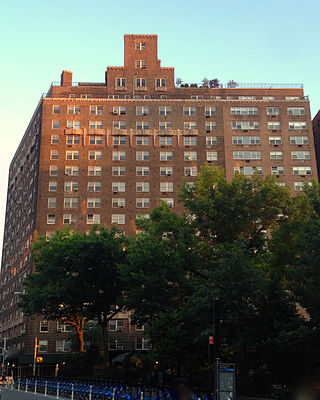
The West Village is a neighborhood in the western section of the larger Greenwich Village neighborhood of Lower Manhattan, New York City. The West Village is bounded by the Hudson River to the west and 14th Street to the north. The eastern boundary is variously cited as Greenwich Avenue, Seventh Avenue, or Sixth Avenue, while the southern boundary is either Houston Street or Christopher Street.
Gothamist is a New York City centric blog website operated by New York Public Radio. From 2003 to 2018 Gothamist LLC was the operator, or in some cases franchisor, of eight city-centric websites that focused on news, events, food, culture, and other local coverage. It was founded in 2003 by Jake Dobkin and Jen Chung. In March 2017, Joe Ricketts, owner of DNAinfo, acquired the company and, in November 2017, the websites were temporarily shut down after the newsroom staff voted to unionize. In February 2018, it was announced that New York Public Radio, KPCC and WAMU had acquired Gothamist, LAist and DCist, respectively. Chicagoist was purchased by Chicago-born rapper Chance the Rapper in July 2018.

Saint Vincent's Catholic Medical Centers was a healthcare system in New York City, anchored by its flagship hospital, St. Vincent's Hospital Manhattan.
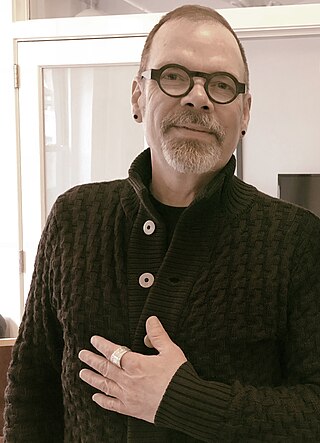
David France is an American investigative reporter, non-fiction author, and filmmaker. He is a former Newsweek senior editor, and has published in New York magazine, The New Yorker, The New York Times Magazine, GQ, and others. France, who is gay, is best known for his investigative journalism on LGBTQ topics.
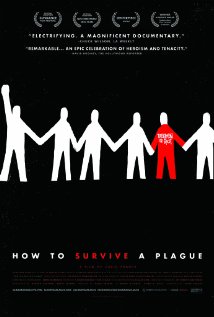
How to Survive a Plague is a 2012 American documentary film about the early years of the AIDS epidemic, and the efforts of activist groups ACT UP and TAG. It was directed by David France, a journalist who covered AIDS from its beginnings. France's first film, it was dedicated to his partner Doug Gould who died of AIDS-related pneumonia in 1992. The documentary was produced using more than 700 hours of archived footage which included news coverage, interviews as well as film of demonstrations, meetings and conferences taken by ACT UP members themselves. France says they knew what they were doing was historic, and that many of them would die. The film opened in selected theatres across the United States on September 21, 2012, also includes footage of a demonstration during mass at St. Patrick's Cathedral in 1989.

Liberty Park is a one-acre (0.40 ha) elevated public park at the World Trade Center in Manhattan, New York City, overlooking the National September 11 Memorial & Museum in Lower Manhattan. The park, which opened on June 29, 2016, is located above the World Trade Center's Vehicular Security Center. The St. Nicholas National Shrine is located within the park, as well as Fritz Koenig's The Sphere, the iconic sculpture salvaged from the World Trade Center site. Another statue, America's Response Monument, is also located in the park.

New York City has been described as the gay capital of the world and the central node of the LGBTQ+ sociopolitical ecosystem, and is home to one of the world's largest LGBTQ populations and the most prominent. Brian Silverman, the author of Frommer's New York City from $90 a Day, wrote the city has "one of the world's largest, loudest, and most powerful LGBT communities", and "Gay and lesbian culture is as much a part of New York's basic identity as yellow cabs, high-rise buildings, and Broadway theatre". LGBT travel guide Queer in the World states, "The fabulosity of Gay New York is unrivaled on Earth, and queer culture seeps into every corner of its five boroughs". LGBT advocate and entertainer Madonna stated metaphorically, "Anyways, not only is New York City the best place in the world because of the queer people here. Let me tell you something, if you can make it here, then you must be queer."

The World Trade Center (WTC) is a complex of buildings in the Lower Manhattan neighborhood of New York City, replacing the original seven buildings on the same site that were destroyed in the September 11 attacks of 2001. The site is being rebuilt with up to six new skyscrapers, four of which have been completed; a memorial and museum to those killed in the attacks; the elevated Liberty Park adjacent to the site, containing the St. Nicholas Greek Orthodox Church and the Vehicular Security Center; the Perelman Performing Arts Center; and a transportation hub. The 104-story One World Trade Center, the tallest building in the Western Hemisphere, is the lead building for the new complex.

Stonewall National Monument is a 7.7-acre (3.1 ha) U.S. national monument in the West Village neighborhood of Greenwich Village in Lower Manhattan, New York City. The designated area includes the Stonewall Inn, the 0.19-acre (0.077 ha) Christopher Park, and nearby streets including Christopher Street, the site of the Stonewall riots of June 28, 1969, widely regarded as the start of the modern LGBT rights movement in the United States.

Greenwich House is a West Village settlement house in New York City.
The AIDS–Holocaust metaphor is used by AIDS activists to compare the AIDS epidemic to the Holocaust. The comparison was popularized by Larry Kramer and ACT-UP, especially the organization's French chapter, as a way to garner sympathy for AIDS sufferers and spur research into the disease. Although the comparison is now "commonly heard" with regard to AIDS, critics maintain that it is a form of Holocaust trivialization.
Janet Inez Weinberg was an American LGBTQ activist, advocate for people with HIV/AIDS and advocate for disability rights, based in New York City. She was a fund-raiser and executive for social service organizations including Gay Men's Health Crisis (GMHC), Educational Alliance, and the Lesbian, Gay, Bisexual and Transgender Community Services Center.
Kai Wright is an American journalist, activist, author, and podcast host. He has served as copy editor at the New York Daily News, senior writer at The Root, senior editor at City Limits, editorial director at ColorLines, and features editor at The Nation. Wright's journalism has focused on social, racial, and economic justice. His writing has appeared in The New York Times, Mother Jones, and Salon, among other outlets, and his national broadcast appearances include MSNBC and NPR. He is the current host and managing editor of Notes from America with Kai Wright on WNYC.
The Village AIDS Memorial, formally known as the Greenwich Village AIDS Memorial, is a series of 580 engraved plaques located in the choir loft of St. Veronica's Church. Each plaque commemorates the life of a New York resident who died of AIDS. Dedicated in 1992, it is one of the first public memorials to recognize the impact of the AIDS epidemic in New York City. The church's rectory was the location of one of the first AIDS hospice centers in Manhattan when it opened in 1985 but the memorial faced a rocky start due to the church's uncertain relationship with the LGBTQ+ community in the city.
